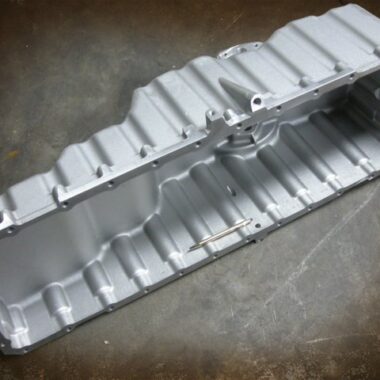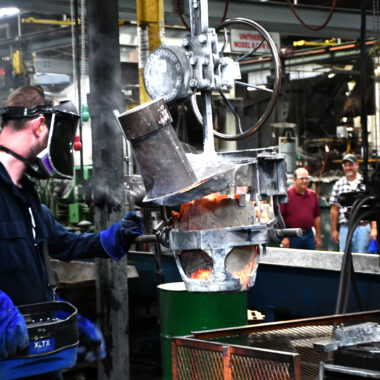Maximizing Efficiency: Advanced Aluminum Casting Solutions Unveiled
Maximizing Efficiency: Advanced Aluminum Casting Solutions Unveiled
Blog Article
Dive Into the Globe of Light Weight Aluminum Spreading: Comprehending the Various Techniques
Light weight aluminum spreading is an essential procedure in the manufacturing industry, with numerous approaches utilized to create elaborate and specific parts. From the standard sand casting method to the sophisticated die casting process, each technique offers distinct advantages depending on the needs of the task.
Sand Spreading Technique
Sand spreading, a widely-used technique in light weight aluminum spreading processes, involves producing molds made of compressed sand for pouring liquified steel. Once the mold and mildew is ready, it is safely positioned in a flask and molten light weight aluminum is poured into the tooth cavity.
After the steel has actually cooled down and solidified, the sand mold is broken away to reveal the aluminum spreading. Sand spreading permits the production of intricate shapes and huge parts that might be challenging or pricey to produce utilizing other techniques. It is also a sustainable strategy as the sand can be reused and used multiple times, reducing waste in the spreading procedure.
Irreversible Mold And Mildew Strategy

One significant benefit of the Long-term Mold Strategy is the boosted dimensional precision it provides. The metal mold enables tighter tolerances and better information in the final aluminum castings contrasted to sand casting techniques. This precision makes it a favored selection for applications where limited dimensional control is essential, such as in the vehicle and aerospace industries.

Pass Away Casting Refine

Investment Casting Approach
Utilizing an accuracy casting technique, Financial investment Casting Strategy involves developing complex light weight aluminum parts by pouring liquified metal right into a ceramic mold and mildew. This process, likewise recognized as lost-wax casting, begins with the development of a wax pattern of the preferred part (aluminum casting).
The following step involves putting the molten light weight aluminum right into the ceramic mold. The light weight aluminum fills the tooth cavity left by the wax pattern, taking its form specifically. This technique is favored for its ability to create complicated forms with high precision and a smooth surface area coating. Investment spreading is frequently used for producing elements in sectors where detailed styles and limited resistances are called for, such as aerospace, automotive, and clinical devices. The adaptability and precision of the Investment Casting Method make it a useful technique in the globe of light weight aluminum spreading.
Lost Foam Casting Technique
Having actually checked out the elaborate precision of Financial investment Casting Approach, the emphasis currently moves to the ingenious approach of Lost Foam Casting in aluminum part manufacturing. Lost Foam Spreading, likewise known as evaporative pattern spreading, is a modern-day technique where a foam pattern of the preferred part is produced and after that coated with a refractory material.
Furthermore, Lost Foam click for more Spreading is a cost-efficient procedure as it lowers the requirement for cores and permits for the production of lightweight elements. In spite of its benefits, Lost Foam Casting needs mindful control of the casting procedure to avoid defects and make certain high quality elements.
Verdict
To conclude, aluminum spreading offers a selection of techniques such as sand casting, permanent mold and mildew method, die casting, financial investment spreading, and shed foam spreading. Each method has its very own benefits and applications, making aluminum casting a functional and extensively made use of process in numerous sectors. Recognizing the distinctions in between these methods is vital in selecting one of the most suitable casting method for details manufacturing demands.
Sand casting, a widely-used technique in aluminum spreading procedures, includes creating molds made of compacted sand for putting liquified steel. aluminum casting.The Irreversible Mold And Mildew Technique, like sand spreading, is another common method employed in aluminum casting procedures, using distinct advantages in terms of mold reusability and dimensional precision. The metal mold and mildew enables for tighter tolerances and finer details in the last aluminum castings compared to sand casting approaches. The two primary kinds of die casting are chilly chamber pass away casting and hot chamber die casting, each appropriate for various types of aluminum alloys.In final thought, light weight aluminum casting supplies a selection of approaches such as sand casting, long-term mold technique, die spreading, financial investment casting, and shed foam spreading
Report this page